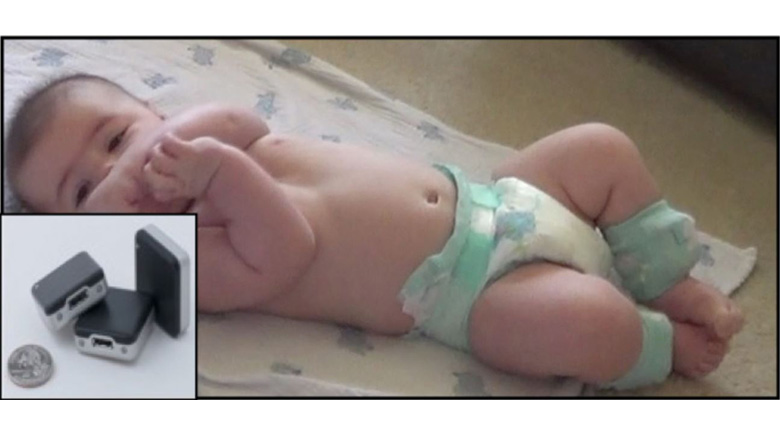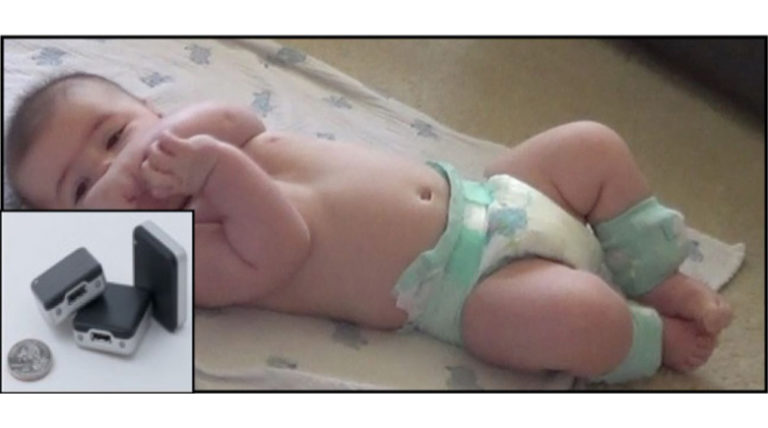
Abstract
This paper examines how features extracted from full-day data recorded by wearable sensors are able to differentiate between infants with typical development and those with or at risk for developmental delays. Wearable sensors were used to collect full-day (8–13 h) leg movement data from infants with typical development ( n=12 ) and infants at risk for developmental delay ( n=24 ). At 24 months, at-risk infants were assessed as having good ( n=10 ) or poor ( n=9 ) developmental outcomes. With this limited size dataset, our statistical analysis indicated that accelerometer features collected earlier in infancy differentiated between at-risk infants with poor and good outcomes at 24 months, as well as infants with typical development. This paper also tested how these features performed on a subset of the data for which the infant movement was known, i.e., 5-min intervals more representative of clinical observations. Our results on this limited dataset indicated that features for full-day data showed more group differences than similar features for the 5-min intervals, supporting the usefulness of full-day movement monitoring.

